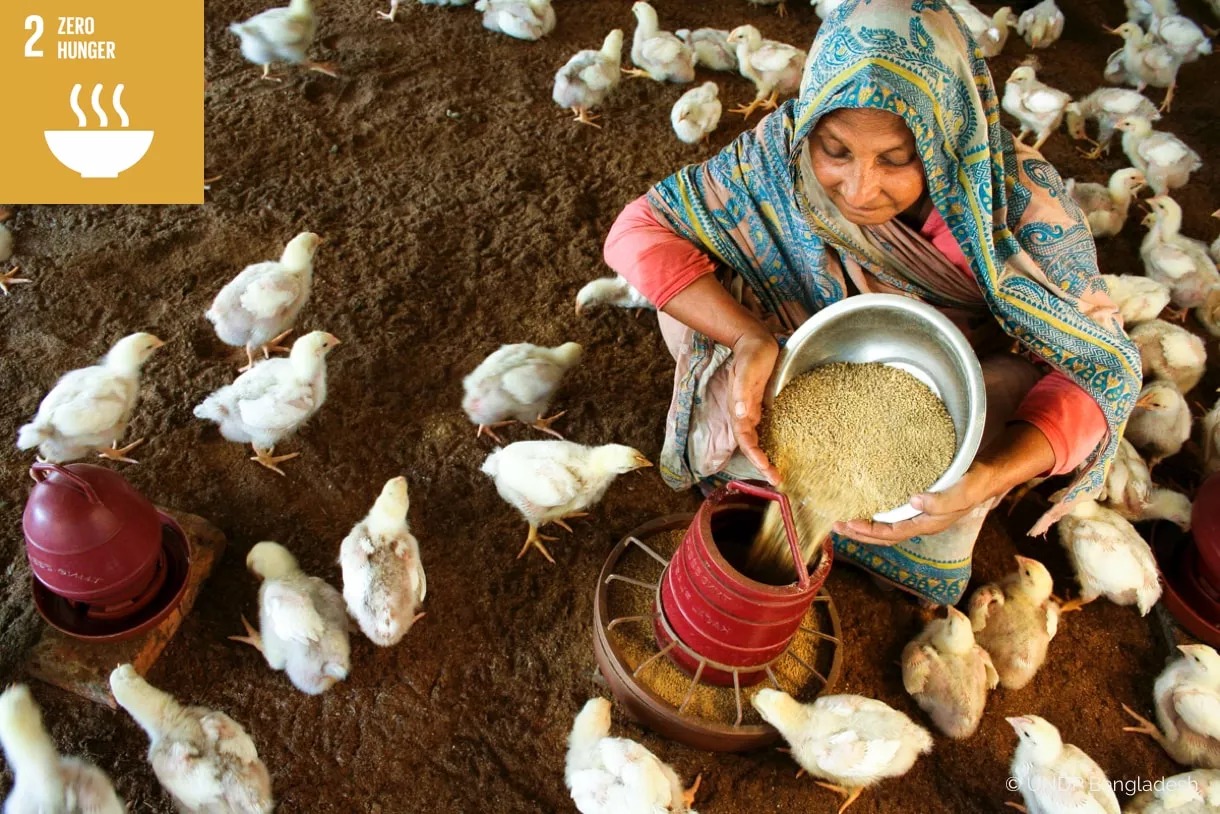Rapid economic growth and increased agricultural productivity over the past two decades have seen the number of undernourished people drop by almost half. Many developing countries that used to suffer from famine and hunger can now meet the nutritional needs of the most vulnerable. Central and East Asia, Latin America and the Caribbean have all made huge progress in eradicating extreme hunger.
These are all huge achievements in line with the targets set out by the first Millennium Development Goals. Unfortunately, extreme hunger and malnutrition remain a huge barrier to development in many countries. 795 million people are estimated to be chronically undernourished as of 2014, often as a direct consequence of environmental degradation, drought and loss of biodiversity. Over 90 million children under the age of five are dangerously underweight. And one person in every four still goes hungry in Africa.
The SDGs aim to end all forms of hunger and malnutrition by 2030, making sure all people – especially children – have access to sufficient and nutritious food all year round. This involves promoting sustainable agricultural practices: supporting small scale farmers and allowing equal access to land, technology and markets. It also requires international cooperation to ensure investment in infrastructure and technology to improve agricultural productivity. Together with the other goals set out here, we can end hunger by 2030.
View Goal Target
- By 2030, end hunger and ensure access by all people, in particular the poor and people in vulnerable situations, including infants, to safe, nutritious and sufficient food all year round
- By 2030, end all forms of malnutrition, including achieving, by 2025, the internationally agreed targets on stunting and wasting in children under 5 years of age, and address the nutritional needs of adolescent girls, pregnant and lactating women and older persons
- By 2030, double the agricultural productivity and incomes of small-scale food producers, in particular women, indigenous peoples, family farmers, pastoralists and fishers, including through secure and equal access to land, other productive resources and inputs, knowledge, financial services, markets and opportunities for value addition and non-farm employment
- By 2030, ensure sustainable food production systems and implement resilient agricultural practices that increase productivity and production, that help maintain ecosystems, that strengthen capacity for adaptation to climate change, extreme weather, drought, flooding and other disasters and that progressively improve land and soil quality
- By 2020, maintain the genetic diversity of seeds, cultivated plants and farmed and domesticated animals and their related wild species, including through soundly managed and diversified seed and plant banks at the national, regional and international levels, and promote access to and fair and equitable sharing of benefits arising from the utilization of genetic resources and associated traditional knowledge, as internationally agreed
- Increase investment, including through enhanced international cooperation, in rural infrastructure, agricultural research and extension services, technology development and plant and livestock gene banks in order to enhance agricultural productive capacity in developing countries, in particular least developed countries
- Correct and prevent trade restrictions and distortions in world agricultural markets, including through the parallel elimination of all forms of agricultural export subsidies and all export measures with equivalent effect, in accordance with the mandate of the Doha Development Round
- Adopt measures to ensure the proper functioning of food commodity markets and their derivatives and facilitate timely access to market information, including on food reserves, in order to help limit extreme food price volatility.
Facts & Figure
Hunger
- An estimated 821 million people were undernourished in 2017.
- The majority of the world’s hungry people live in developing countries, where 12.9 per cent of the population is undernourished.
- Sub-Saharan Africa remains the region with the highest prevalence of hunger, with the rate increasing from 20.7 per cent in 2014 to 23.2 per cent in 2017.
- In sub-Saharan Africa, the number of undernourished people increased from 195 million in 2014 to 237 million in 2017.
- Poor nutrition causes nearly half (45 per cent) of deaths in children under five – 3.1 million children each year.
- 149 million children under 5 years of age—22 per cent of the global under-5 population—were still chronically undernourished in 2018.
Food security
- Agriculture is the single largest employer in the world, providing livelihoods for 40 per cent of today’s global population. It is the largest source of income and jobs for poor rural households.
- 500 million small farms worldwide, most still rainfed, provide up to 80 per cent of food consumed in a large part of the developing world. Investing in smallholder women and men is an important way to increase food security and nutrition for the poorest, as well as food production for local and global markets.
- Since the 1900’s, some 75 per cent of crop diversity has been lost from farmers’ fields. Better use of agricultural biodiversity can contribute to more nutritious diets, enhanced livelihoods for farming communities and more resilient and sustainable farming systems.
- If women farmers had the same access to resources as men, the number of hungry in the world could be reduced by up to 150 million.
- 840 million people have no access to electricity worldwide – most of whom live in rural areas of the developing world. Energy poverty in many regions is a fundamental barrier to reducing hunger and ensuring that the world can produce enough food to meet future demand.


